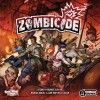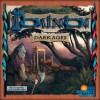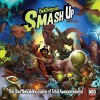

Dash72521
gamer level 3
1346 xp
1346 xp
followers
8
8
Use my invite URL to register (this will give me kudos)
https://boardgaming.com/register/?invited_by=dash72521
profile badges




recent achievements

I'm a Real Player!
Claim that you have played a game today by clicking the "Played Today!" button on a game page 25 times.
Claim that you have played a game today by clicking the "Played Today!" button on a game page 25 times.

Advocate
Give 25 hearts (loyalty points) to a single game
Give 25 hearts (loyalty points) to a single game

Strategist
Submit 5 game strategies (a type of game tip) and get 20 positive ratings.
Submit 5 game strategies (a type of game tip) and get 20 positive ratings.

Freshman
Earn Professor XP to level up by completing Professor Quests!
Earn Professor XP to level up by completing Professor Quests!




![Go to the Level 7 [escape] page Go to the Level 7 [escape] page](https://boardgaming.com/wp-content/uploads/2012/08/Level-7-escape-100x100.jpg)




























The Manhattan Project
I just recently got the opportunity to play this game. I had seen it on Kickstarter but did not end up pledging. I had never played a worker placement game before, so this was all new to me.
Given that I had never played a worker-placement game, I was pleasantly surprised with how quickly I was able to pick up the game. I was playing inside of five minutes. The competition for constructions, espionage, production of workers, and ultimately the race to build a bomb was extremely engaging.
However, according to the player running the game, the victory conditions are 45 victory points. Being as how a plutonium bomb with a bomb test and loaded into a bomber can be more than enough to satisfy these conditions. The same can happen with two low-cost uranium bombs played in the same round (which is how our game ended). Because the game can end in one round, it is tough to make much of a competition of it. Our five-player game ended up being 45pts, 8pts, 0pts, 0pts, and 0pts. Because of the all-or-nothing nature of the game, I give it a replay value of 3/5.
What initially drew me to the game was the combination of a serious topic (proliferation of nuclear arms) with components that lighten it up including cutesie-looking meeples. The artwork was impressive while not being too detailed as to detract from the gameplay. I give the components a solid 4/5.
As I mentioned above, we were sat at the table no more than five minutes before play began. It was fairly intuitive and I understood the goals of the game and how one might go about reaching them. However, the newer players did not have much strategy and ended up falling behind. I believe this means the game is easy to learn but difficult to master, so I ended up giving the learning curve a 3/5.
All in all, it is not a bad game. I would play the game again, but I would probably not buy it.